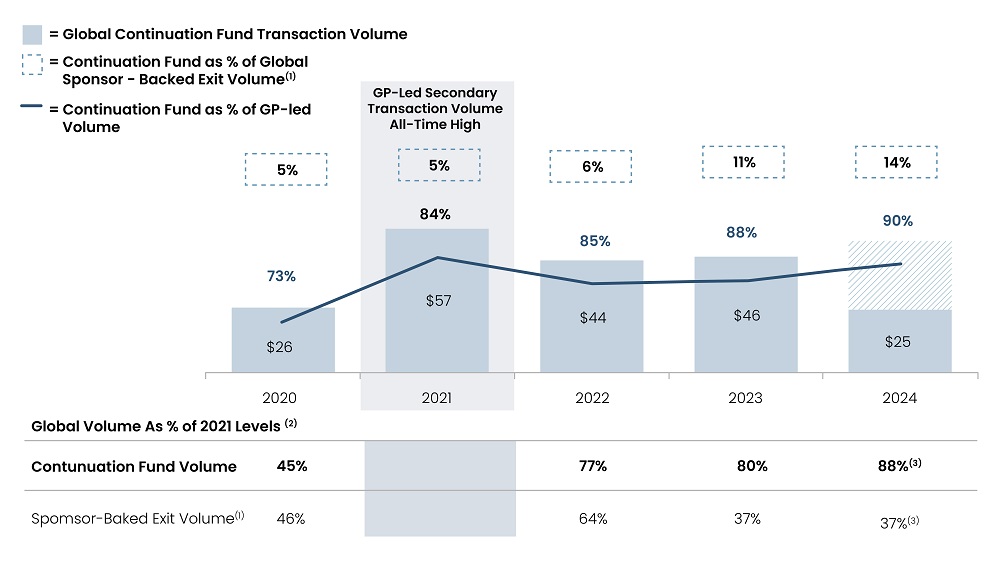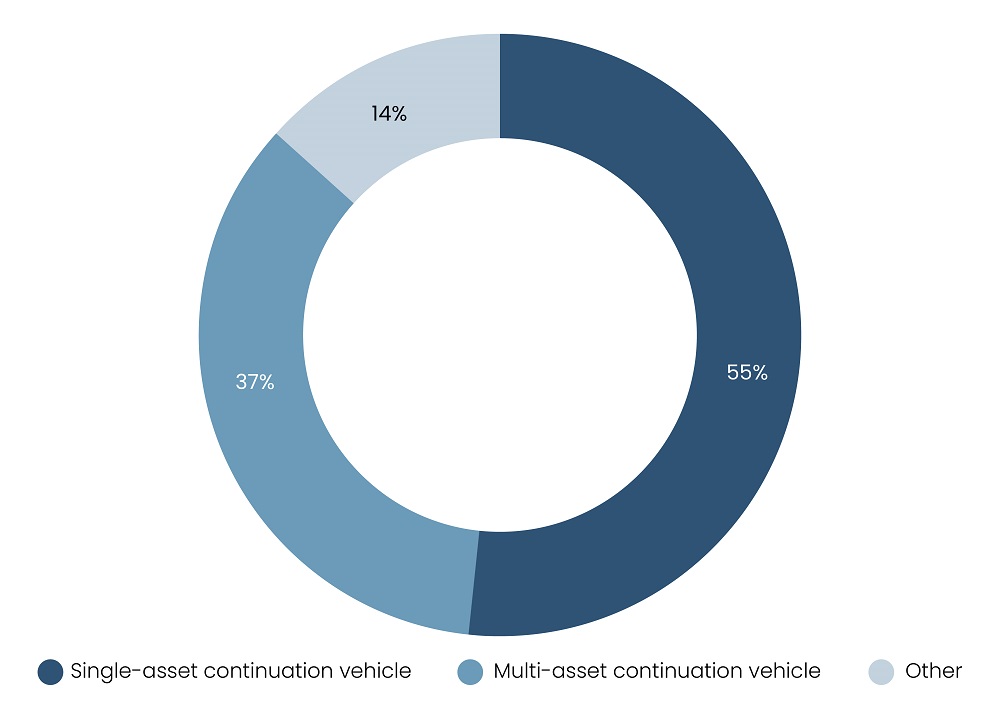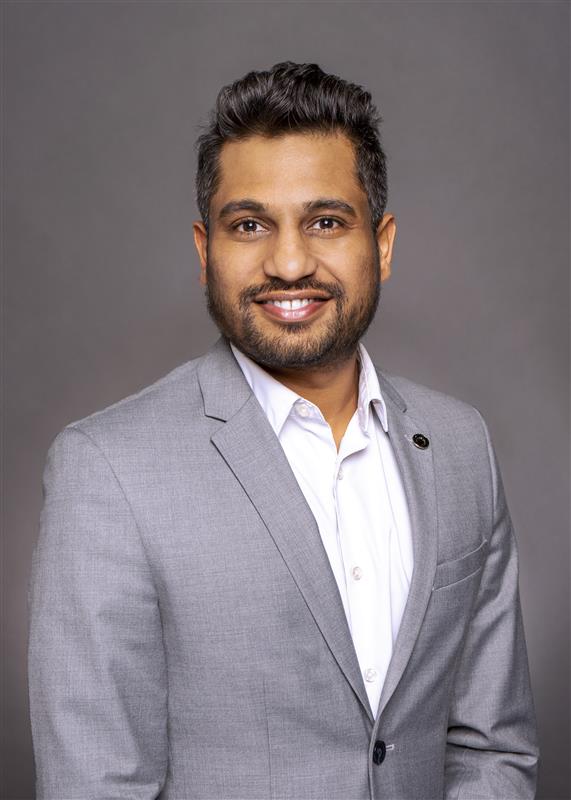Continuation funds are redefining the GP-led secondary market amid the recent resurgence, positioning themselves as a vital alternative exit route for private equity (PE) firms. Despite a few challenges, these funds are gaining traction among stakeholders.
According to Jefferies, GP-led transaction volume in the global secondary market hit $28 billion in 1H24, exhibiting 56% YoY growth and the highest volume since 2021 in the first half of any year. Continuation funds accounted for 90% of these transactions, an improvement from 88% in 2023.
The resurgence in enthusiasm for these funds can be attributed to LP’s demand for liquidity in a market where the exit activity is muted. Continuation funds gained popularity in 2021 and 2024, two years with contrasting market conditions. In 2021, deal-making was robust in contrast to the present scenario. The motivation for LPs then was to gain more from the assets that were performing well, thereby allowing their continuation.
Figure 1: Continuation Fund Volume ($B)

Source: Jefferies Global Secondary Market Review July 2024
Read more: AI’s Power Conundrum: Will Renewables Save the Day?
Continuation Funds provide fresh capital to invest in high-quality assets without needing to exit prematurely, enabling continued value creation. They realign incentives and provide liquidity options to cash-constrained investors. The demand for continuation vehicles (CVs) remains high, with single-asset continuation vehicles (SACVs) priced at 94% of NAV and multi-asset continuation vehicles (MACVs) at 88% of NAV, as per the Blackrock Secondary Market Update 2H24. The report also highlights growing participation as PE firms and family offices expand in GP-led secondaries.
On September 18, 2024, Thompson Street Capital Partners, a St. Louis-based PE firm, completed a SACV to continue its partnership with Gurobi, a provider of mathematical optimization software. Similarly, on September 9, 2024, Gryphon, a San Francisco-based PE firm, closed a SACV for Vessco Water, a distributor of wastewater technology products.
SACV dominated the market with 55% of total GP-led fund volume, followed by MACV at 31%, according to the Evercore 1H24 Secondary Market Survey. The high volume of SAVC transactions reflects a trend among mid-market sponsors increasingly adopting highly focused CVs as a strategic tool. In contrast, MACVs remain popular among large-cap sponsors for portfolio management to generate flexible liquidity and extend the holding periods of best-performing assets.
However, the process in MACV is costly and complex, involving multiple funds and uncertainty around the final asset composition, making it harder for final buyers to pay attractive prices. These deals carry the risk of having underperforming assets bundled in them, requiring additional capital and negatively impacting the entire fund’s return. In comparison, SAVC focuses on a single high-quality asset, allowing investors to do deeper due diligence.
Figure 2: SACV surpassed MACV in transaction volume
Breakdown of Transaction Types (% of Transaction Volume)

Source: Evercore, H1 2024 Secondary Market Survey, July 2024. “Other” is comprised of preferred equity, which represented 9% of transactions, and tender offers, which represented 5%
Read more: Unlocking M&A Potential: The Impact of Fed’s Rate Strategy
Challenges in Continuation Funds
Bankruptcy within continuation funds has raised concerns about the sustainability of these vehicles, highlighting potential risks. Wheel Pros, rebranded as Hoonigan, filed for Chapter 11 bankruptcy in September 2024, accruing $1.74 billion in debt, which moved into the continuation fund by Clearlake in 2021. Another rare CV bankruptcy occurred in March 2024 with Riverstone-backed Enviva Holdings, which had been moved into a continuation fund in 2020.
Continuation funds are more complex than traditional sales, often requiring extra time and resources for structuring and managing LP elections. They can incur higher costs, though usually shared between the parties. Unlike third-party sales, management doesn’t usually receive immediate liquidity in continuation funds, requiring extra incentives to stay motivated. This can lead to uncertainty for stakeholders expecting instant financial returns.
Secondary investors often face challenges selling an ideal combination of a significantly discounted asset and finding a GP with a strong familiarity with the portfolio. Small secondary investors are disadvantaged in GP-led deals when advisors prioritize larger buyers who can swiftly commit substantial amounts of capital and provide favorable terms for LPs. Further, original LPs are most likely to be affected by misalignment of interest when they bear greater responsibility for liquidity choices while paying similar fees in continuation funds.
Assets in continuation funds are often undervalued when transferred from the original fund. This lowered valuation benefits GPs by inflating future profits and increasing carried interest when assets are sold at higher prices. A Whitehorse Liquidity Partners’ analysis of over 1,000 continuation fund transactions revealed that the assets were sold at an average of 28% higher valuations than GP’s assessment six months earlier, posing a risk to LPs and secondary investors who may face distorted valuations.
Thus, conflict of interest can arise as GPs oversee both sides of the deal, making fair pricing a key concern. LPAC (Limited Partnership Advisory Committee) approval and transparency are critical to mitigating these risks and avoiding broken-deal fees.

Read more: Dividend Recapitalization Pick up in 2024
Conclusion
Continuation funds have provided the much-needed liquidity, enabling the GPs to provide liquidity to the investors while allowing underperforming portfolio companies extended timelines to realize their potential. However, they require careful structuring to address challenges such as conflict of interest and transparency in valuation. Apart from these, the CVs are poised to enhance the scope of secondaries.
Partner of choice for lower middle market-focused investment banks and private equity firms, SG Analytics provides offshore analysts with support across the deal life cycle. Our complimentary access to a full back-office research ecosystem (database access, graphics team, sector & and domain experts, and technology-driven automation of tactical processes) positions our clients to win more deal mandates and execute these deals in the most efficient manner.
About SG Analytics
SG Analytics (SGA) is an industry-leading global data solutions firm providing data-centric research and contextual analytics services to its clients, including Fortune 500 companies, across BFSI, Technology, Media & Entertainment, and Healthcare sectors. Established in 2007, SG Analytics is a Great Place to Work® (GPTW) certified company with a team of over 1200 employees and a presence across the U.S.A., the UK, Switzerland, Poland, and India.
Apart from being recognized by reputed firms such as Gartner, Everest Group, and ISG, SGA has been featured in the elite Deloitte Technology Fast 50 India 2023 and APAC 2024 High Growth Companies by the Financial Times & Statista.









